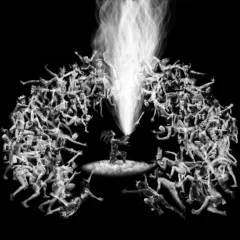Beneath the rich colors and evocative forms of the works in Unpacking Hispañola lies the painful story of the island’s past, the violent divisions between Haiti and the Dominican Republic, between black and white, and between official history and individual memory. In a series of pieces brought together by guest curator Abigail Lapin Dardashti, artists Firelei Báez and Scherezade García probe these wounds and offer a vision of reconciliation outside of the traditional bounds of nationalist narratives. Their work combines the personal and political in an emotionally powerful and visually arresting ensemble. The deep blues and lush greens of Hispañola lingered in my mind long after I left the gallery.
Violent conflict
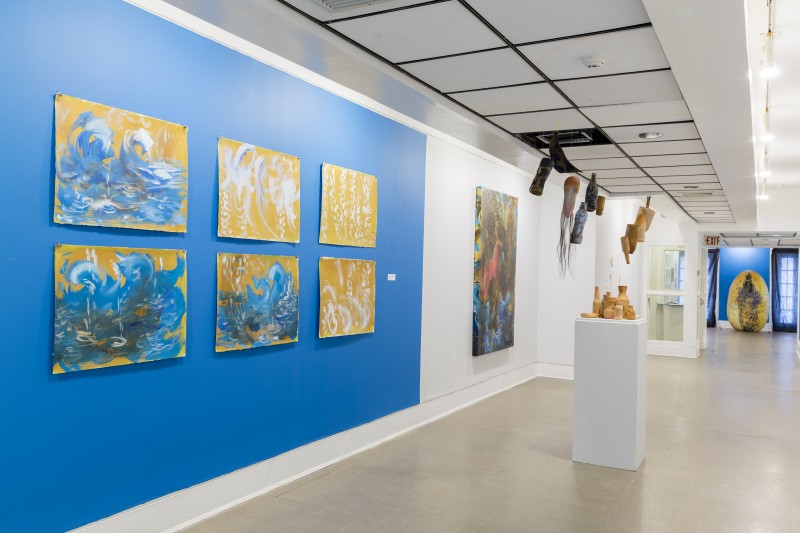
Organized in two halves, in the Lorenzo Homar Gallery’s front and back spaces, the first part of the show, “Reconstructing History,” seeks out the silences of history, giving voice to the intergenerational pain that stretches back to the earliest days of colonization. Báez’s acrylic and ink drawing “Retablo (España en las Americas)” sets the stage for this half of the exhibition. A white severed arm rests on a wooden surface, its fingers gently curled in a helpless gesture. The raw violence of the severed limb contrasts to the delicate tattoo, adapted from an 18th-century textile design, that covers the arm from wrist to shoulder. Báez’s unsettling tattooed arm points towards the racial, gendered, and political violence that continues to take its toll on the island.
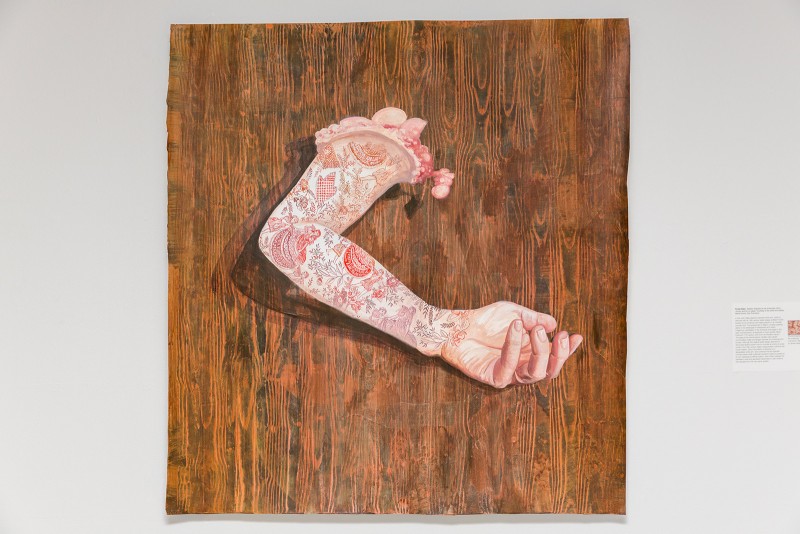
On the other side of the gallery, García’s “Memoria del Perejil” project makes this violence even more explicit. The project commemorates the 1937 Perejil massacre, in which troops led by Dominican dictator Rafael Trujillo killed between 12,000 and 20,000 Haitians. García designed a postcard with the images of two identical black angels, Haiti and the Dominican Republic. On the reverse, she asked respondents to tell her what they had been told about the massacre. While some wrote that the massacre was a justified cull of undesirable foreigners, others decried the violence and underscored the racist component of Trujillo’s anti-Haitian policies. Gazing at the angelic black faces on García’s postcard, one comment stands out: “God made us according to his image and likeness.” In the context of ongoing racial violence, this is no mere cliché or commonplace statement.
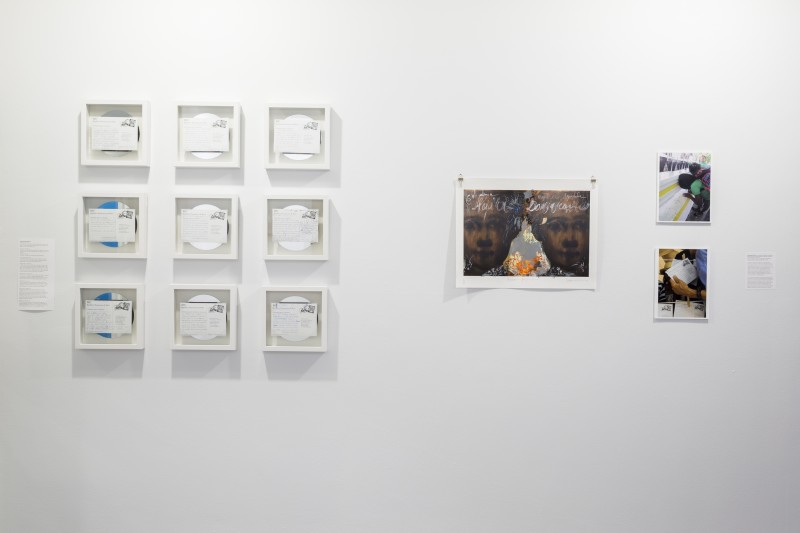
Water and a way forward
In the second half of the exhibition, “Myth in the Making,” both artists attempt to figure a way forward from this dark and painful past. Both Báez and García are currently based in New York City, and their reflections on the island of their birth are shaped by that geographic distance. Water features prominently in their work, the ocean that surrounds their island but also which separates them from it.
García’s monumental canvas, “Paradise According to the Tropics III/Sunburned Baby Jesus” offers a playful take on culture and commodity in our postmodern world. Inspired by the rich palette and dynamic, emotional figures of Baroque art, García’s angels literally look out of this world. One angel, holding the reddened body of the Christ child, looks up to the heavens, while the other angel’s downcast eyes and long, sweeping eyelashes almost distract the viewer from the incongruous Mickey Mouse ears atop his head. None of the figures seem to notice the falling rain or the rising water that surrounds them. Paper airplanes and plastic toy airplanes flit around the figures, suggesting one pragmatic way to escape this storm: emigration.
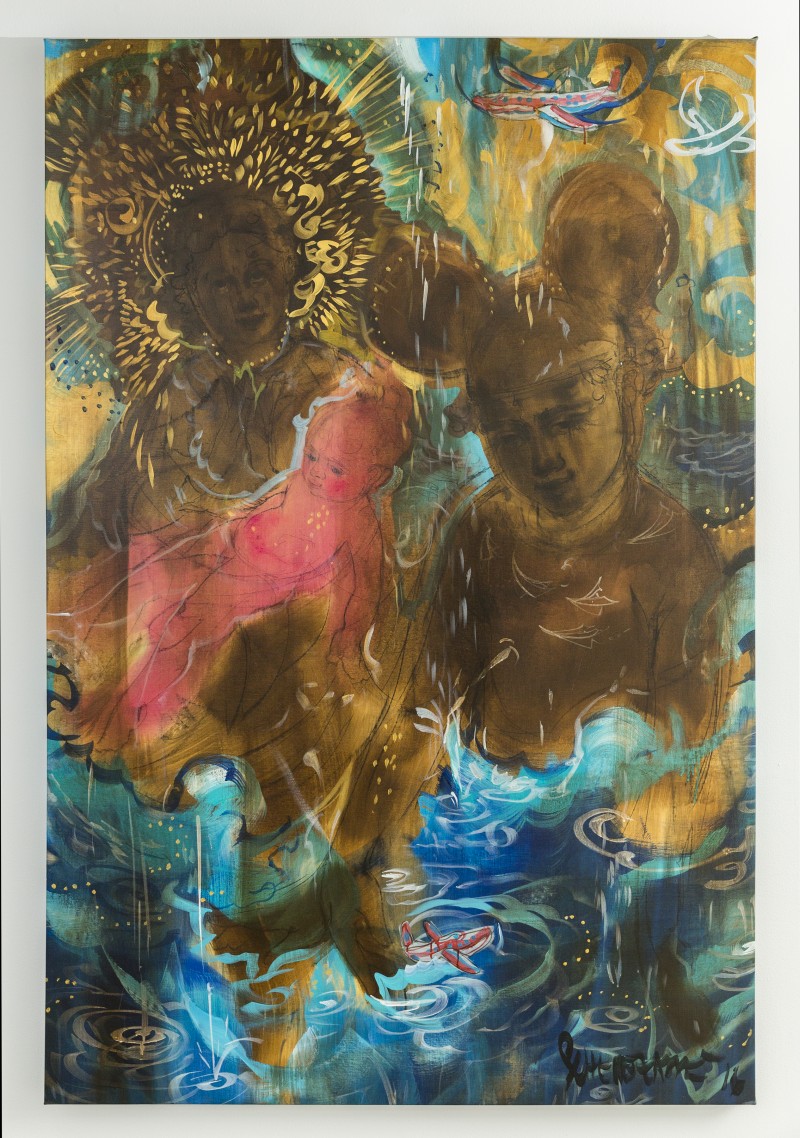
Báez turns to the world of folklore and popular culture for her series of works featuring the ciguapa, a mythical female creature with backward-facing feet and a hair-covered body. A handful of studies offer fragments of the ciguapa and her story, which is explored in greater depth on the opposite wall. Báez’s “It’s Been Ours” is a comic book-like series of square painted wooden panels that hint at a larger narrative. In each panel, the small figure of a woman in silhouette capers through a surreal outer space-like landscape like a trickster Barbarella. In the final panel, we see the silhouette of a woman with a multicolored universe tattooed onto her skin, an optimistic contrast to the violently severed limb with which we began.
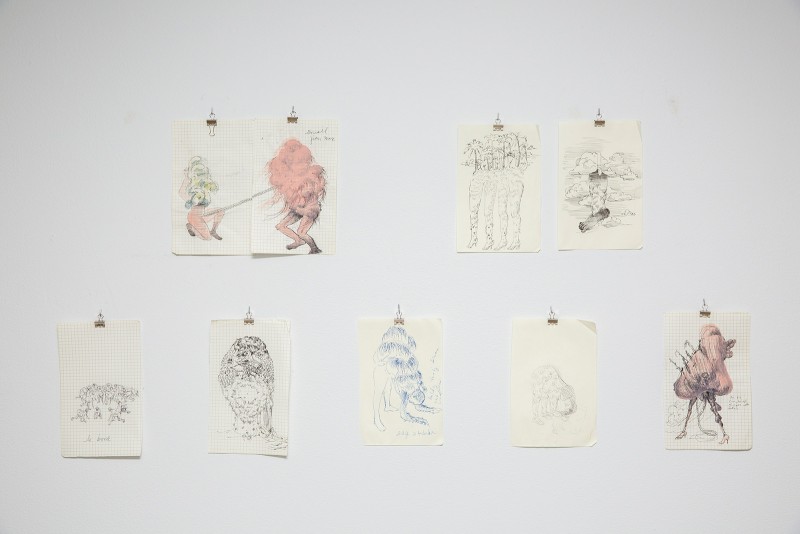
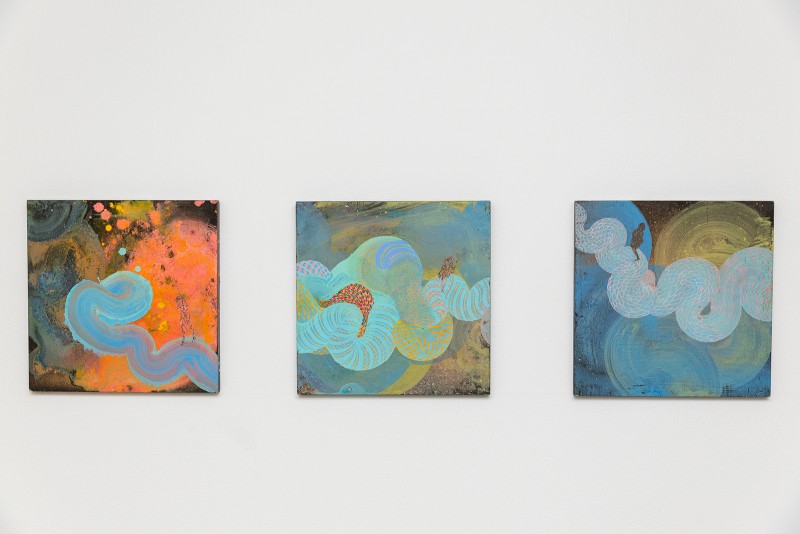
Unpacking Hispañola, curated by Abigail Lapin Dardashti, ends April 8 at 5 pm. Taller Puertorriqueño hours: Monday to Friday 9-5, and Saturday 10-6. Closed every day from noon-1 pm.






